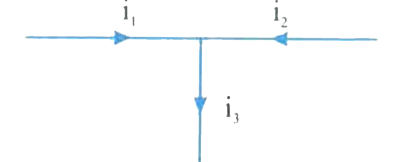Derive the three equation of rotational motion
(i) ω=ω0+at
(ii) θ=ω0t+12αt2
(iii) ω2=ω20+2αθ
Under constant angular acceleration. Here symbols have usual meaning.
To derive the three equations of rotational motion under constant angular acceleration, we will follow a systematic approach.
Derivation of the Three Equations of Rotational Motion
1. First Equation: ω=ω0+αt
Step 1: Start with the definition of angular acceleration.
Angular acceleration α is defined as the rate of change of angular velocity ω with respect to time t:
α=dωdt
Step 2: Rearrange the equation to express it in terms of dω:
dω=αdt
Step 3: Integrate both sides. The limits for ω are from ω0 (initial angular velocity) to ω (final angular velocity), and for t from 0 to t:
∫ωω0dω=∫t0αdt
Step 4: Since α is constant, the right-hand side becomes:
ω−ω0=αt
Step 5: Rearranging gives us the first equation:
ω=ω0+αt
---
2. Second Equation: θ=ω0t+12αt2
Step 1: Recall that angular velocity ω is defined as the rate of change of angular displacement θ:
ω=dθdt
Step 2: Rearranging gives:
dθ=ωdt
Step 3: Substitute ω from the first equation into this expression:
dθ=(ω0+αt)dt
Step 4: Integrate both sides. The limits for θ are from 0 to θ and for t from 0 to t:
∫θ0dθ=∫t0(ω0+αt)dt
Step 5: This gives:
θ=ω0t+12αt2
---
3. Third Equation: ω2=ω20+2αθ
Step 1: Start with the definition of angular acceleration again:
α=dωdt
Step 2: Rewrite this in terms of dθ:
α=dωdθ⋅dθdt
This can be rearranged to:
αdθ=ωdω
Step 3: Integrate both sides. The limits for θ are from 0 to θ and for ω from ω0 to ω:
∫θ0αdθ=∫ωω0ωdω
Step 4: This gives:
αθ=12(ω2−ω20)
Step 5: Rearranging leads to the third equation:
ω2=ω20+2αθ
Summary of the Equations
1. ω=ω0+αt
2. θ=ω0t+12αt2
3. ω2=ω20+2αθ
---
Angular acceleration α is defined as the rate of change of angular velocity ω with respect to time t:
α=dωdt
dω=αdt
∫ωω0dω=∫t0αdt
ω−ω0=αt
ω=ω0+αt
ω=dθdt
dθ=ωdt
dθ=(ω0+αt)dt
∫θ0dθ=∫t0(ω0+αt)dt
θ=ω0t+12αt2
α=dωdt
α=dωdθ⋅dθdt
This can be rearranged to:
αdθ=ωdω
∫θ0αdθ=∫ωω0ωdω
αθ=12(ω2−ω20)
ω2=ω20+2αθ
1. ω=ω0+αt
2. θ=ω0t+12αt2
3. ω2=ω20+2αθ
Topper's Solved these Questions
- ROTATIONAL MOTION BOOK - CBSE COMPLEMENTARY MATERIALCHAPTER - ROTATIONAL MOTION EXERCISE - NUMERICALS
12 Videos
- ROTATIONAL MOTION BOOK - CBSE COMPLEMENTARY MATERIALCHAPTER - ROTATIONAL MOTION EXERCISE - ROTATIONAL MOTION (5 MARKS)
2 Videos
- ROTATIONAL MOTION BOOK - CBSE COMPLEMENTARY MATERIALCHAPTER - ROTATIONAL MOTION EXERCISE - ROTATIONAL MOTION (2 MARK)
15 Videos
- PROPERTIES OF MATTERBOOK - CBSE COMPLEMENTARY MATERIALCHAPTER - PROPERTIES OF MATTEREXERCISE - MULTIPLE CHOICE QUESTIONS (MCQs)
20 Videos
- THERMODYNAMICS BOOK - CBSE COMPLEMENTARY MATERIALCHAPTER - THERMODYNAMICS EXERCISE - MULTIPLE CHOICE QUESTIONS (MCQs)
20 Videos
Similar Questions
Knowledge Check
If α,β are the roots of x2+px+q=0,andω is a cube root of unity, then value of (ωα+ω2β)(ω2α+ωβ) is
Ap2B3qCp2−2qDp2−3qIn the relation dydt=2ωsin(ωt+ϕ0), the dimensional formula for ωt+ϕ0 is
AMLTBMLT0CML0T0DM0L0T0If w=α+iβ where Bη0 and z≠1 satisfies the condition that (w−¯¯¯wz1−z) is purely real then the set of values of z is
Az:|z|≠1Bz:|z|=1Cz:z≠1Dz:z=¯z
The differentia equation obtained on eliminating A and B from y=Acos ωt+bsinωt, is y+y′=0 b. y−ω^2y=0 c. y=ω2y d. y+y=0
View SolutionLet ω1 and ω2 be the roots of ω2+aω+b=0. If origin, ω1 and ω2 form an equilateral triangle then
View SolutionIf i1=3sinωt and i2=6cosωt, then i3 is

View SolutionFind the dimensions of
a. angular speed ω
angular acceleration α
torque τ and
d. moment of interia I.<br>.Someoftheequations∈volv∈gthesequantitiesareomega=(theta_2-theta_1)/(t_2-t_1), alpha = (omega_2-omega_1)/(t_2-t_1), tau= F.r and I=mr^2
The symbols have standard meanings.
View Solutionthe angular velocity omega of a particle varies with time t as ω=5t2+25rads. the angular acceleration of the particle att=1s is
View Solution
